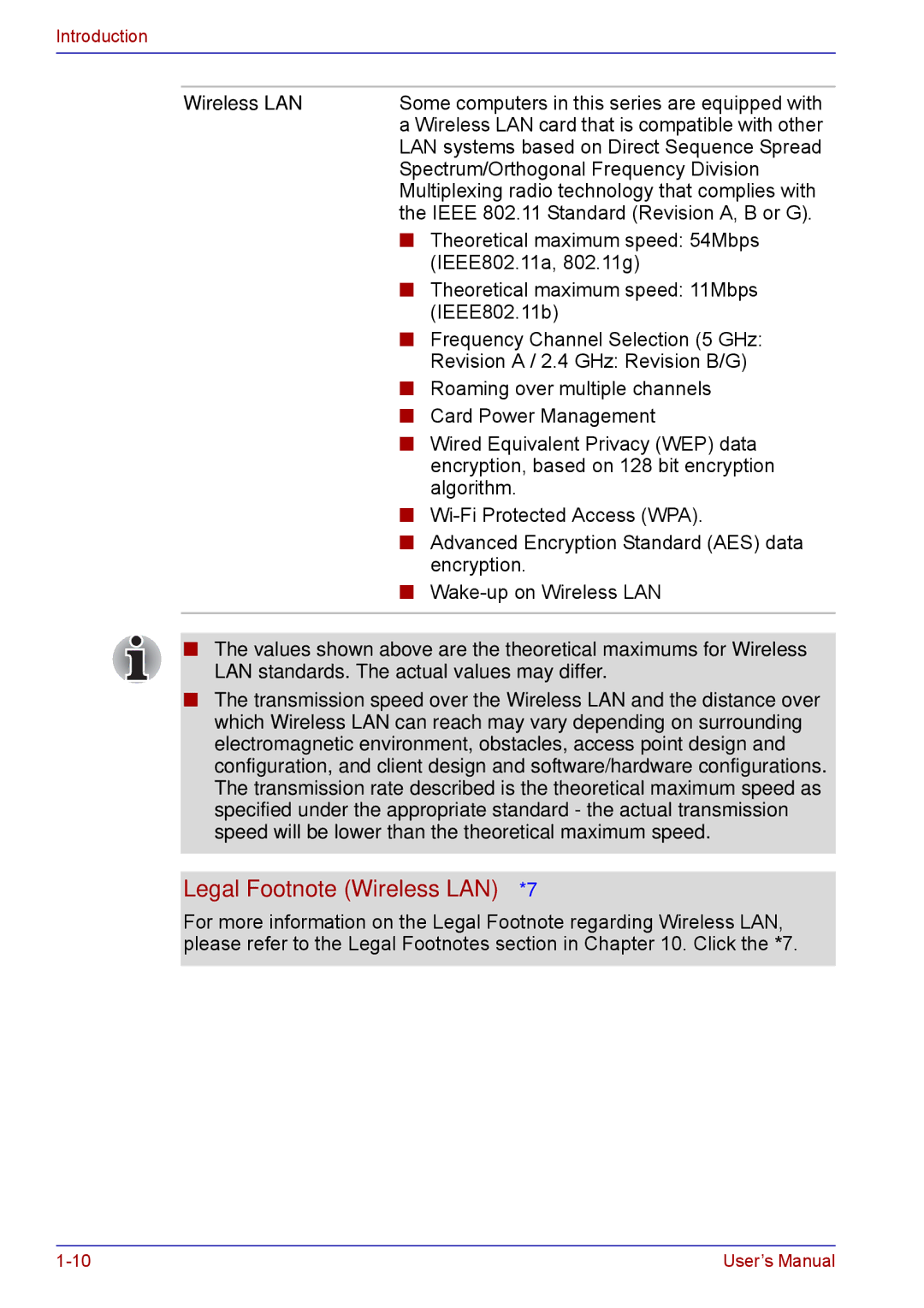
Introduction
Wireless LAN | Some computers in this series are equipped with |
| a Wireless LAN card that is compatible with other |
| LAN systems based on Direct Sequence Spread |
| Spectrum/Orthogonal Frequency Division |
| Multiplexing radio technology that complies with |
| the IEEE 802.11 Standard (Revision A, B or G). |
■Theoretical maximum speed: 54Mbps (IEEE802.11a, 802.11g)
■Theoretical maximum speed: 11Mbps (IEEE802.11b)
■Frequency Channel Selection (5 GHz: Revision A / 2.4 GHz: Revision B/G)
■Roaming over multiple channels
■Card Power Management
■Wired Equivalent Privacy (WEP) data encryption, based on 128 bit encryption algorithm.
■
■Advanced Encryption Standard (AES) data encryption.
■
■The values shown above are the theoretical maximums for Wireless LAN standards. The actual values may differ.
■The transmission speed over the Wireless LAN and the distance over which Wireless LAN can reach may vary depending on surrounding electromagnetic environment, obstacles, access point design and configuration, and client design and software/hardware configurations. The transmission rate described is the theoretical maximum speed as specified under the appropriate standard - the actual transmission speed will be lower than the theoretical maximum speed.
Legal Footnote (Wireless LAN)*7
For more information on the Legal Footnote regarding Wireless LAN, please refer to the Legal Footnotes section in Chapter 10. Click the *7.
User’s Manual |
